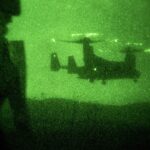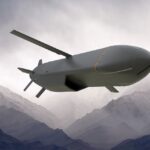Work is underway at Turkey’s first aircraft carrier, TCG “Anadolu” (Pennant number: L-408) at Sedef Shipyard near Istanbul. The Anadolu is built by the Sedef-Novatia joint Turkish-Spanish venture using the design of the SPS “Juan Carlos” amphibious assault ship operated by the Spanish Navy. Geospatial intelligence (GEOINT) released by the Israeli private geospatial firm IamgeSatIntel shows great progress on the ship. The Anadolu is expected to be completed later this year and to enter service with the Turkish Navy in 2021.
#Turkey is building its first aircraft carrier TCG “#Anadolu” (L-408). The original plan, which didn’t include the ski-jump, changed due to #Turkish #Airforce‘s decision to buy F-35 jets. This intention was blocked by the #US due to Turkey’s purchase of the #Russian #S400. pic.twitter.com/tnBnOwHydQ
— ImageSat Intl. (@ImageSatIntl) January 26, 2020
The TCG Anadolu will be capable of traveling 9,000 miles (14,500 kilometers) without refueling. The ship is 232 meters in length, 32 meters in width and 55 meters in height, and is said to have a full load displacement of about 27,000 tons.The aircraft carrier will be able to operate four mechanized, two air-cushioned and two personnel landing vehicles, as well as aircraft, helicopters and unmanned aerial vehicles (UAV). However, Turkey has no fixed-wing aircraft compatible with light-carrier operations and the market offer is extremely limited.
In mid-2019, the United States ended Turkey’s participation in the Joint Strike Fighter (JSF), after Ankara received its first S-400 air defense system (NATO Reporting name: SA-21 “Growler) from Russia. Banned from the JSF program, Turkey lost its order of almost 100 F-35As jets and the ability to follow-up with other purchases. Therefore, the Turkish Navy can stop dreaming about operating F-35Bs from its flatop. The F-35B is purpose-built to be operated from amphibious assault ships and austers landing zones. While Ankara decides whether it wants to build its own STOVL aircraft or acquire an alternative aircraft, the Anadolu will only field helicopters and UAVs in the medium to long term.
The construction of the ship began in 2016. The Anadolu reflects an increased Turkish interest in projecting power abroad and competing against regional adversaries (Greece, Israel and Egypt). The vessel will augment Turkey’s interests in the Eastern Mediterranean and support out-of-area operations, such as its foreign deployments in Somalia and Qatar. In addition, the vessel is intended to meet the various needs and requirements of the Turkish Armed Forces – such as sustaining long-endurance missions, humanitarian relief operations – while acting as a command center and flagship for the Turkish Naval Forces.
- Russia Bombs Maternity Ward & Children’s Hospital in Mariupol As Part of Siege - 10 March 2022
- T-Intell’s OSINT Training Marks One Year Anniversary - 18 November 2021
- IS-K Never Left the Battlefield - 27 August 2021






